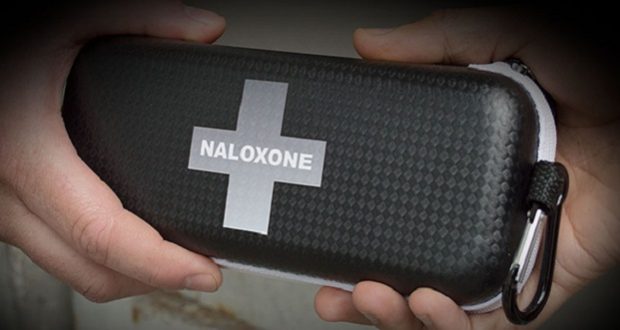MADERA COUNTY –The Madera County Public Health Department and the Sheriff’s Office have been working together to address the growing opioid epidemic and save lives.
Though residents of the mountain area may think this is a problem reserved for cities, Coarsegold actually tops the list of deaths county-wide from opiate overdoses, with 13 deaths per 100,000 people, followed by Chowchilla at 8 deaths per 100,000, and the City of Madera at 6.
“Drug overdoses are the leading cause of unintentional injury death in the U.S.,” said Sara Bosse, Madera County Public Heath Director, speaking to the Board of Supervisors at their regular meeting on Tuesday. “They cause more deaths than motor vehicle crashes, and opioids are responsible for most of these deaths.”
Opioids include both heroin and prescription painkillers such as morphine, methadone, hydrocodone, oxycodone and fentanyl.
But there is a way to save lives with the proper resources and training.
Naloxone (prescription name “Narcan”) works almost immediately to reverse an opiate overdose, said Bosse, has few known adverse effects, no potential for abuse, and can be rapidly administered.
Most healthcare first responders are equipped with naloxone, but they may not arrive in time to revive overdose victims, especially in outlying areas of the county.
Sheriff’s deputies are likely to be first on scene, and Madera County Sheriff’s staff have been trained to administer naloxone.
“Providing naloxone to deputies increases the chance of reversing an opiate overdose, potentially saving the lives of county residents, and also law enforcement who experience a contact exposure to fentanyl, in particular,” said Bosse.
Drug users aren’t the only ones who need to take extreme precautions with fentanyl, which is reported to be 50-100 times more potent than heroin, and just a few grains can be lethal.
The danger to first responders is very real, especially when handling evidence encountered at a crime scene. Just patting someone down or conducting a field test can cause the substance to come in contact with the skin or be inhaled. It even poses a danger to police dogs.
In A Briefing Guide for First Responders, the DEA warns, “There is a significant threat to law enforcement personnel, and other first responders, who may come in contact with fentanyl and other fentanyl‐related substances through routine law enforcement, emergency or life‐saving activities. Since fentanyl can be ingested orally, inhaled through the nose or mouth, or absorbed through the skin or eyes, any substance suspected to contain fentanyl should be treated with extreme caution as exposure to a small amount can lead to significant health‐related complications, respiratory depression, or death.”
Sheriff Jay Varney says his deputies are seeing a large uptick in fentanyl use.
“A very small amount can create an overdose,” says Varney. “Most of the opioid-based overdoses are probably more prescription and heroin-based, but as fentanyl becomes more popular – and I don’t know why you would want to take something that can kill you if you get the dosage off by a very small amount – we are really concerned about the health of our County employees and pubic safety employees, and we want to be equipped to deal with the problem.”
Having naloxone as part of their supplies and equipment allows deputies to take immediate steps to not only save people from an overdose, but to also protect their own health, and even that of their K9 dogs.
Madera County Public Health and the Sheriff’s Office are working together through the California Department of Public Health Safe and Active Communities Branch Naloxone Grant Program to provide this important service.
“Under the grant, Madera County is being given 330 doses of naloxone, saving the County $12,400,” Bosse told the Board. “We received 186 doses this month, and yesterday, Public Health transferred 146 doses of naloxone to the Sheriff’s Department. 40 doses have been reserved for Chowchilla Police once they have received training.”
The grant will end June 2018 with a second shipment of 144 doses, and is unlikely to repeat.
“Public Health and law enforcement will be looking for ways to sustain this service in absence of the grant,” said Bosse.
Examples of opioids:
1. Painkillers such as; morphine, methadone, Buprenorphine, hydrocodone, and oxycodone. Heroin is also an opioid and is illegal.
2. Brand names include: OxyContin®, Percocet®, Palladone®(taken off the market 7/2005), Vicodin®, Percodan®, Tylox® and Demerol® among others.
3. Not opioids are; Cocaine, methamphetamines, ecstasy, LSD, GHB, Ketamine, other club drugs, or steroids.
Sources:
https://www.cdph.ca.gov/Programs/CCDPHP/DCDIC/SACB/Pages/NaloxoneGrantProgram.aspx
https://www.naabt.org/faq_answers.cfm?ID=4
https://drugabuse.com/first-responders-worry-about-accidental-fentanyl-exposure/
https://www.dea.gov/druginfo/Fentanyl_BriefingGuideforFirstResponders_June2017.pdf




